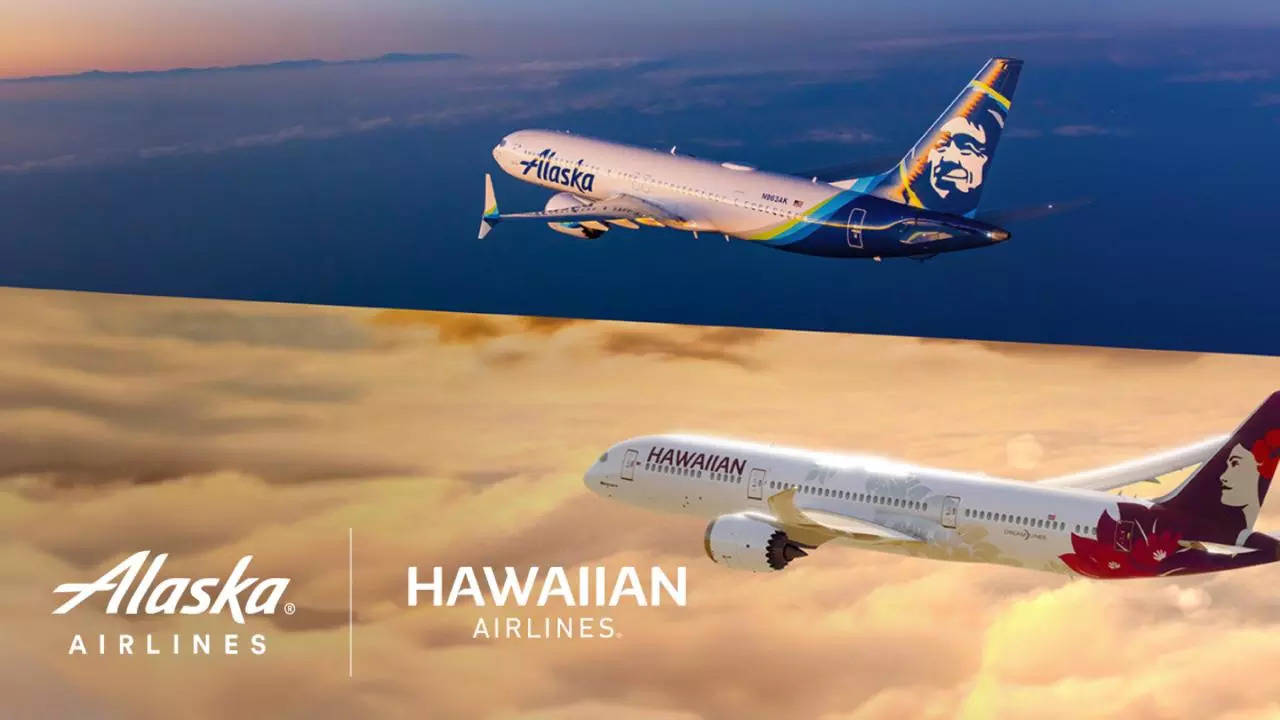
[ad_1]
Alaska Airlines made headlines on Sunday with the announcement of its intent to purchase Hawaiian Airlines for a significant $1.9 billion, marking a strategic move that awaits regulatory approval to consolidate its position as the nation’s fifth-largest carrier.
Under the terms of the agreement, both airline brands will persist, setting the stage for a combined fleet of 365 narrow and widebody aircraft serving 138 destinations.The deal positions Seattle-based Alaska Airlines with a new secondary hub in the Hawaiian capital ofHonolulu.
While the merger could potentially enhance services for Hawaii residents, providing expanded connections to the continental U.S. and new routes to Asia and the Pacific, regulatory approval remains uncertain. The U.S. Department of Justice, under President Joe Biden, has displayed a reluctance toward industry consolidation, as evident in previous legal battles, including the contested alliance between American Airlines and JetBlue.
The agreement, if approved, would result in a powerhouse airline based in Seattle, helmed by Alaska Airlines CEO Ben Minicucci. The merged entity is poised to join the oneworld Alliance, boasting an extensive network connecting 138 destinations across the U.S., Asia, Australia, and the South Pacific. The strategic positioning would also maintain Honolulu as a pivotal hub, emphasizing a commitment to the union-represented workforce in Hawaii.
While both companies highlight the potential benefits for consumers and opportunities for growth, critics anticipate regulatory scrutiny due to reduced competition in Hawaii, where Alaska and Hawaiian currently operate. The deal’s success hinges on the approval of Hawaiian Holdings shareholders and subsequent regulatory clearance, which could take 12 to 18 months to complete.
This acquisition reflects the broader trend in the airline industry as carriers seek consolidation to navigate financial challenges. Alaska’s move to purchase Hawaiian aligns with its growth-oriented strategy, positioning the combined airline to compete more effectively with industry giants.
As the industry awaits regulatory decisions, the outcome will shape the landscape of domestic air travel, impacting competition, fares, and the structure of major airline alliances. The broader implications of this acquisition will be closely monitored as it undergoes regulatory review.
(with inputs from agencies)
Under the terms of the agreement, both airline brands will persist, setting the stage for a combined fleet of 365 narrow and widebody aircraft serving 138 destinations.The deal positions Seattle-based Alaska Airlines with a new secondary hub in the Hawaiian capital ofHonolulu.
While the merger could potentially enhance services for Hawaii residents, providing expanded connections to the continental U.S. and new routes to Asia and the Pacific, regulatory approval remains uncertain. The U.S. Department of Justice, under President Joe Biden, has displayed a reluctance toward industry consolidation, as evident in previous legal battles, including the contested alliance between American Airlines and JetBlue.
The agreement, if approved, would result in a powerhouse airline based in Seattle, helmed by Alaska Airlines CEO Ben Minicucci. The merged entity is poised to join the oneworld Alliance, boasting an extensive network connecting 138 destinations across the U.S., Asia, Australia, and the South Pacific. The strategic positioning would also maintain Honolulu as a pivotal hub, emphasizing a commitment to the union-represented workforce in Hawaii.
While both companies highlight the potential benefits for consumers and opportunities for growth, critics anticipate regulatory scrutiny due to reduced competition in Hawaii, where Alaska and Hawaiian currently operate. The deal’s success hinges on the approval of Hawaiian Holdings shareholders and subsequent regulatory clearance, which could take 12 to 18 months to complete.
This acquisition reflects the broader trend in the airline industry as carriers seek consolidation to navigate financial challenges. Alaska’s move to purchase Hawaiian aligns with its growth-oriented strategy, positioning the combined airline to compete more effectively with industry giants.
As the industry awaits regulatory decisions, the outcome will shape the landscape of domestic air travel, impacting competition, fares, and the structure of major airline alliances. The broader implications of this acquisition will be closely monitored as it undergoes regulatory review.
(with inputs from agencies)
[ad_2]
Source link
